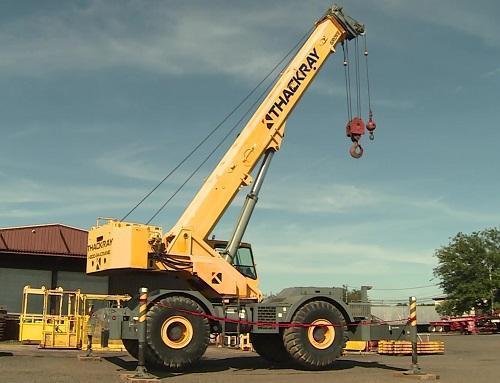Introduction: Heavy equipment is an essential part of many construction and industrial operations, but it also poses significant risks to those who operate and work around it. The safe operation of heavy equipment is the responsibility of everyone involved, from the operators to the supervisors and the on-foot workers. Proper training and adherence to safety procedures are essential to prevent accidents and injuries.
Training Requirements for the Operator: Operators of heavy equipment must have the proper knowledge, ability, and skills to operate the machinery safely. They must also be familiar with the limitations of the equipment and follow the manufacturer’s instructions and guidelines. Only authorized persons with appropriate training or licenses should be allowed to operate heavy equipment. Operators who are sick, fatigued, or taking medication that may affect their ability to operate safely should notify their supervisor.
Operator Equipment Safety Checklist: Operators should follow a safety checklist before the start of each shift. This includes approaching the equipment, walking fully around it to look for hazards, and checking inside the cab for trash, clean windows, and a functional fire extinguisher. Outside, operators should check the lights, tires, suspension, and steering system, and look for cracks or other unsafe conditions. Before starting the engine, operators should check all gauges and warning lights and test the equipment’s movements.
Working around heavy machinery requires a collective effort to ensure safety is always maintained. On-foot employees must go through the proper training and be aware of possible risks in order to assure their wellbeing. Communication between operators and other workers is essential, so everyone must have knowledge of standard hand signals used when operating equipment. Additionally, machine operators should constantly know where individuals walking near them are located for an extra layer of caution; those on foot can wear bright vests for improved visibility as well.
General Safety Measures when Working around Heavy Equipment: General safety measures when working around heavy equipment include the use of back-up warning alarms and two-way radios for communication. Operators should also be aware of their surroundings and avoid blind spots. On-foot workers should always stay clear of the equipment’s movement and not walk under raised equipment. The equipment should also be marked with warning signs to alert workers of potential hazards.
Signal Persons/Spotters: A signal person or spotter is responsible for communicating with the operator and directing the movement of the equipment. They must have proper training and be able to understand and use the standardized hand signals. Signal persons should also wear high-visibility vests and be aware of their surroundings.
Crane Operations Safety Measures: Crane operations pose specific hazards and require specific safety measures. Operators must be properly trained and certified, and they should be familiar with the manufacturer’s instructions and guidelines. Cranes should be inspected before each use and be equipped with safety features such as kill switches, guards, and roll-over protection. Only authorized personnel should be allowed to operate the crane, and the work area should be secured to prevent access by unauthorized personnel.
Safety Measures for Asphalt Paving Operations: Asphalt paving operations involve the use of heavy equipment such as pavers, rollers, and trucks. Safety measures include proper training for operators, regular equipment inspections, and the use of safety features such as kill switches and guards. Workers should also wear appropriate personal protective equipment and be aware of the hazards associated with hot asphalt.
Conclusion: Heavy equipment safety is essential to prevent accidents and injuries in construction and industrial operations. Proper training, adherence to safety procedures, and effective communication are crucial for the safe operation of heavy equipment. Employers and operators have a responsibility to ensure that all safety measures are in place and that on-foot workers are aware of potential hazards. By following these guidelines, we can ensure a safe working environment for everyone involved in heavy equipment operations.










